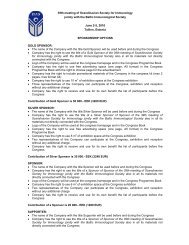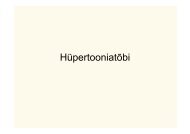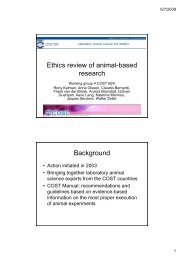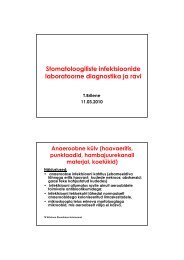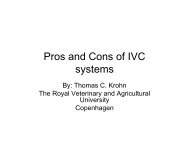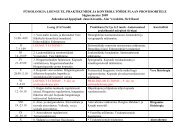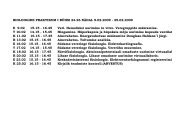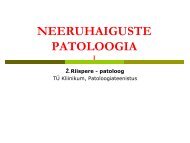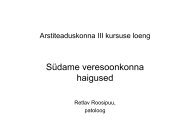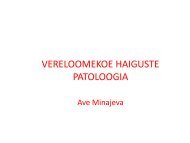ANATOMY 1 Name of the Department: Department ... - Biomeedikum
ANATOMY 1 Name of the Department: Department ... - Biomeedikum
ANATOMY 1 Name of the Department: Department ... - Biomeedikum
Create successful ePaper yourself
Turn your PDF publications into a flip-book with our unique Google optimized e-Paper software.
MICROBIOLOGY<br />
<strong>Name</strong> <strong>of</strong> <strong>the</strong> <strong>Department</strong>: <strong>Department</strong> <strong>of</strong> Medical Microbiology<br />
Head <strong>of</strong> <strong>the</strong> <strong>Department</strong>: Pr<strong>of</strong>essor Marika Mikelsaar<br />
<strong>Name</strong> <strong>of</strong> <strong>the</strong> Chair: Medical Microbiology and Virology<br />
Head <strong>of</strong> <strong>the</strong> <strong>Department</strong>: Pr<strong>of</strong>essor Marika Mikelsaar<br />
Subject codes: ARMB.01.009; ARMB.01.012; ARMB.01.013;<br />
ARMB.01.01.14; ARMB.01.015; ARMB.01.020;<br />
ARMB.01.027; ARMB.01.033<br />
I. CONTENT OF THE TEACHING<br />
The aim <strong>of</strong> our department is to teach on <strong>the</strong> graduate level <strong>the</strong> medical microbiology<br />
to <strong>the</strong> medical, dentistry and pharmacy students in order to provide<br />
knowledge for solving <strong>the</strong> problems <strong>of</strong><br />
1. common, hospital and emerging infectious diseases, concerning <strong>the</strong>ir epidemiology,<br />
pathogenesis, diagnostics, treatment and prophylaxis in <strong>the</strong>ir<br />
praxis;<br />
2. coexistence with <strong>the</strong> huge burden <strong>of</strong> indigenous microorganisms in our<br />
body and environment for successful protection <strong>of</strong> <strong>the</strong> health <strong>of</strong> a particular<br />
person and <strong>the</strong> population.<br />
1. Describe shortly <strong>the</strong> main study and student evaluation methods applied at<br />
<strong>the</strong> department.<br />
In <strong>the</strong> department <strong>the</strong> main study methods are:<br />
• lectures: obligate courses in general, special, clinial microbiology and elective<br />
courses for different problems <strong>of</strong> microbiology<br />
• seminars<br />
• laboratory praxis<br />
• seminar + conference<br />
• directed self-education<br />
• students research work in <strong>the</strong> department<br />
For evaluation <strong>the</strong> oral and written exam and +/- tests are used.<br />
2. How have <strong>the</strong> aims and objectives described in <strong>the</strong> curriculum changed<br />
during <strong>the</strong> past five years?<br />
The described aims have been traditionally characteristic for teaching <strong>of</strong> microbiology<br />
during many years in University <strong>of</strong> Tartu. Yet, during <strong>the</strong> last 2<br />
years <strong>the</strong> aims <strong>of</strong> microbiology teaching have been increasingly oriented towards<br />
more intense teaching <strong>of</strong> students in clinical than in systematic microbiology.<br />
Our new curriculum from 1998 aims to provide <strong>the</strong> students with con-<br />
93



